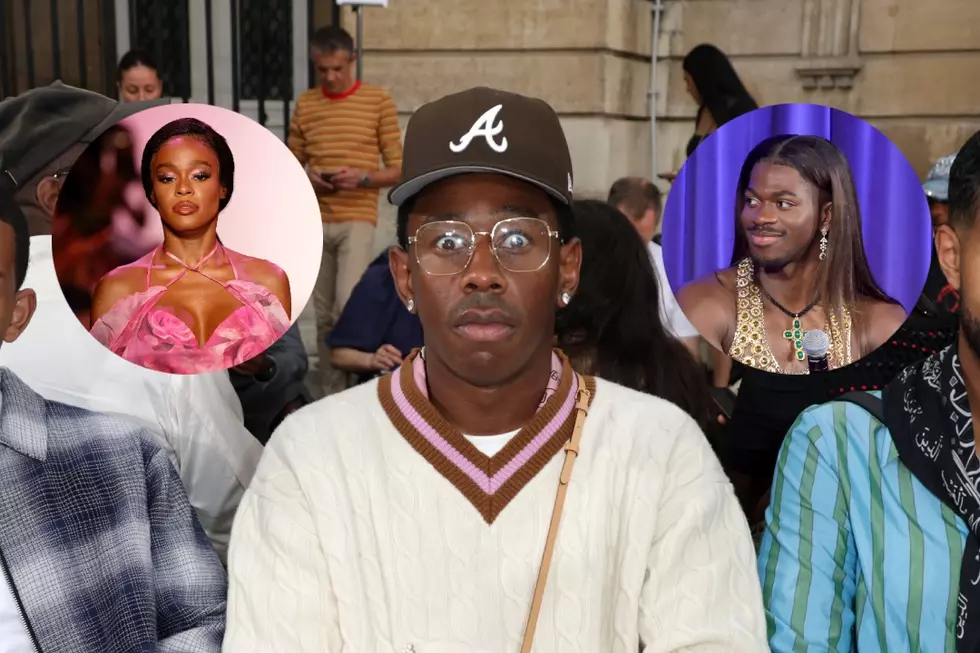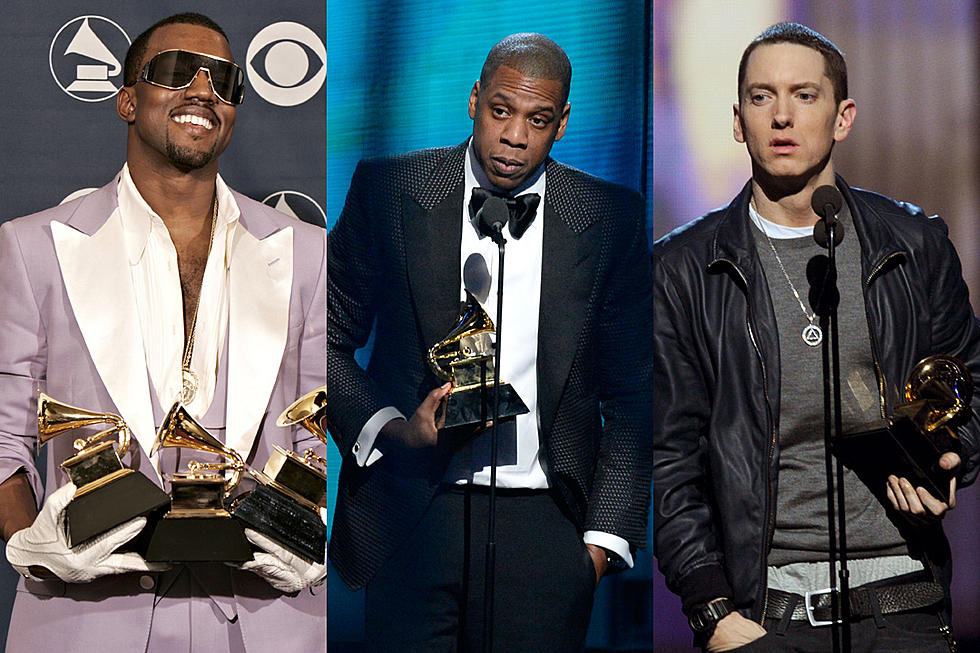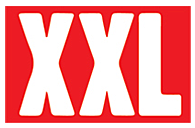![City of Dope [Excerpt From the Dec./Jan. 2012 Issue]](http://townsquare.media/site/812/files/2011/12/bay_area.jpg?w=980&q=75)
City of Dope [Excerpt From the Dec./Jan. 2012 Issue]
“What's up y'all. It's ya boy T-Dollaz, here on the shoot for the hyphy video. Yo, it's 'bout to be major!”
These are the words of Odd Future front man Tyler, the Creator, in the intro to a YouTube clip titled simply “Hyphy.” (In fact, it’s the first result you get if you search “hyphy” on YouTube.) To the sounds of an old track by The Pack, the Odd Future crew does stupid dances on and around a car in a quiet-looking suburban neighborhood, which is another way of saying that it looks no different from a number of actual hyphy music videos—except that this one is a parody.
“Must feel so bummy to be from the bay area hahahaha,” reads a recent comment from YouTube user waajahat94.
In just five years’ time, just five hours south of the Bay Area (if you’re speeding and there’s no traffic on the Grapevine), it has become perfectly acceptable, and maybe even cool, to make a complete mockery of what was once poised to be a nationwide craze. “The next crunk,” hyphy was supposed to put the Bay
Area in the spotlight it felt it deserved. Now it’s a punch line—one made that much more offensive when the taunting comes from Los Angeles.
The Bay has lived in L.A.’s shadow for as long as either region has made rap music. And back in the middle of the last decade, it looked like NoCal might finally unseat SoCal as the Golden State’s dominant sound bed. Much to the chagrin of Bay Area rappers—and ecstasy dealers, oversized-sunglasses retailers and used-Buick dealerships all over America—that didn’t come to pass.
By the time the major labels finally descended upon the Bay with contracts, money, big ideas and Lil Jon beats, the charismatic man at the center of the movement, Vallejo’s Mac Dre, had been unceremoniously murdered on a highway in Kansas City, Missouri.
Aside from a movement with no clear center, the majors also encountered a fiercely independent scene that had come to believe the idea that the Bay Area would finally receive its due props. Everyone in the deep-rooted and extremely diverse hip-hop community hopped on the hyphy bandwagon (or, more appropriately, danced alongside it), from teenage backpackers to local legends who’d been rapping for two decades.
This isn’t to say that local artists’ interest wasn’t genuine or that people in the Bay Area weren’t thrilled with the attention. But in the end, the effect was something like a speculative bubble bursting. Rappers flooded the market with hyphy music and silliness like it was going out of style, until finally it did. Everyone had gone dumb, and they ended up looking like a joke.
“It comes off as corny and like a gimmick, when it really wasn’t,” according to Chioke “Stretch Thizz” McCoy, a man who has played the background in Bay Area music for the last decade, from launching Thizz Nation Records with Mac Dre to helping Kreayshawn sign her million-dollar deal. (He’s the wall
of a man keeping the Maybach Music gang from jumping Kreay in the much-watched clip from this summer’s VMAs.) “It was people’s escape from the realities of what they got to deal with
on a daily basis in their neighborhood, but that story was never told,” he explains. “It was never put out there, so it comes off as buffoonery.”
While no one still expects Mac Dre to become a household name these days, though, the Bay Area has regrouped since the hyphy bust—both by turning inward and focusing on maintaining its independent scene and by finding viral, national success via the Internet.
FOR MORE OF THE BAY AREA FEATURE, GO TO PAGE TWO
The Bay Turns Inward
Plenty of rappers made their names off of large sunglasses, dumb dancing and tricked-out Buick LeSabres and have hardly been heard from since. But just as many, if not more, have stuck to what they were good at in the first place: making and distributing their own music all on their own, without any major-label support.
The two biggest acts to come out of Oakland in the 1980s, MC Hammer and Too $hort, were a harbinger of how things would work in the Bay Area. Selling dirty, dirty raps out of his trunk (believe it or not, the original “Blowjob Betty” is even nastier than the Jive version), Too $hort made himself a small fortune—and began one of the longest, steadiest careers in hip-hop history. MC Hammer got a deal with Capitol Records, sold tens of millions of records, spent all his money on shiny things and race horses, and went famously bankrupt. He now lives in relative obscurity, the bogeyman of major-label excess. The tortoise-vs.-hare lesson in this story was sort of lost in the collective excitement over hyphy.
“It’s one of the few places you can literally make hundreds of thousands of dollars a year and be unknown everywhere else,” Stretch says of the current state of the Bay. He should know:
He has helped put out more than 150 albums in his decade-long career in the local industry.
Take Stretch’s business partner, West Oakland’s J Stalin, for instance. He’s turned what used to be a cover for his illegal hustling into Livewire Records, one of the most active independent street labels going in the Bay Area.
“I sold ’em on my turf,” Stalin says of his early records. “Like, I used to be outside, selling drugs at the same time. I’d have a backpack on with CDs in it. And I’d be selling CDs while I was selling my little drugs, you know. So if I ever got stopped by the police, I could tell ’em I’m selling CDs.”
That backpack of home-burned, hand-labeled CDs has turned into a small empire of sorts, a launching pad for other talented Oakland street rappers. J Stalin’s Livewire imprint has made local stars out of a growing list of Oakland rappers (among them, Philthy Rich, Stevie Joe, Shady Nate and Lil Blood) dedicated to doing nothing but documenting the dark realities of life in Tha Town.But in all this grit and violence, Stalin has found financial success. “Livewire Records is making a lot of money,” he says over the phone from Oakland.
One key part of the business model: cutting out the middleman. Stalin’s next mixtape is coming out soon. (I’m Sellin’ Dope, it’s called, naturally.) The day before its release, you might catch him with boxes of his CDs, dropping them off by the thousand to local record shops like Rasputin and Dimple Records.
Here’s how it works. “I pressed up 5,000 of them, and 4,000 of them is already presold,” he says. “I’m gonna drop 2,000 off at Rasputin for $6 apiece. So that’s, like, $12,000 from them. And then I’m gonna drop another thousand off at Dimple [in Sacramento], and that’s gonna be another $6,000. That’s, like, $18,000 that you can make off a mixtape—in one day.”
The Jacka is another excellent example of a Bay Area rapper who has found independent success by bucking trends, instead of hopping on them. From Pittsburg, a smaller town northeast
of Oakland, located where the Sacramento River meets the bay, Jacka is a member of Mob Figaz—a group consisting of himself, his partner Husalah and a semirotating cast of third players, including AP.9, Rydah J Klyde and Fed-X.
Though he doesn’t manage a large roster of artists like J Stalin does, Jacka has made something of an industry of himself. Grim and melancholy, he’s won accolades from East Coast rappers like Cormega and Freeway and has developed a market for shows across the Midwest (something that Livewire’s stable also enjoys). And he releases a huge amount of product: more than six albums a year for the last few years. He estimates he’ll net an average of $80,000 on each one. “You do the math on that,” Jacka says. “Those is good numbers.”
“It’s just like being on a major,” he continues. “We get the same amount of money, but it depends on how famous we wanna be. Like, if I can pick up a check for 50 or 60 thousand, do I spend that all on radio, or do I spend that all on getting a spot on BET or MTV and try to get national, you know, be nationwide? Or do I stack the money and keep dropping projects that I know are gonna make money? I’d rather take the bread, you know!”—Will Staley
**FOR MORE OF THIS STORY, PICK UP THE NOVEMBER 2011 ISSUE OF XXL, ON STANDS NOW**
More From XXL









